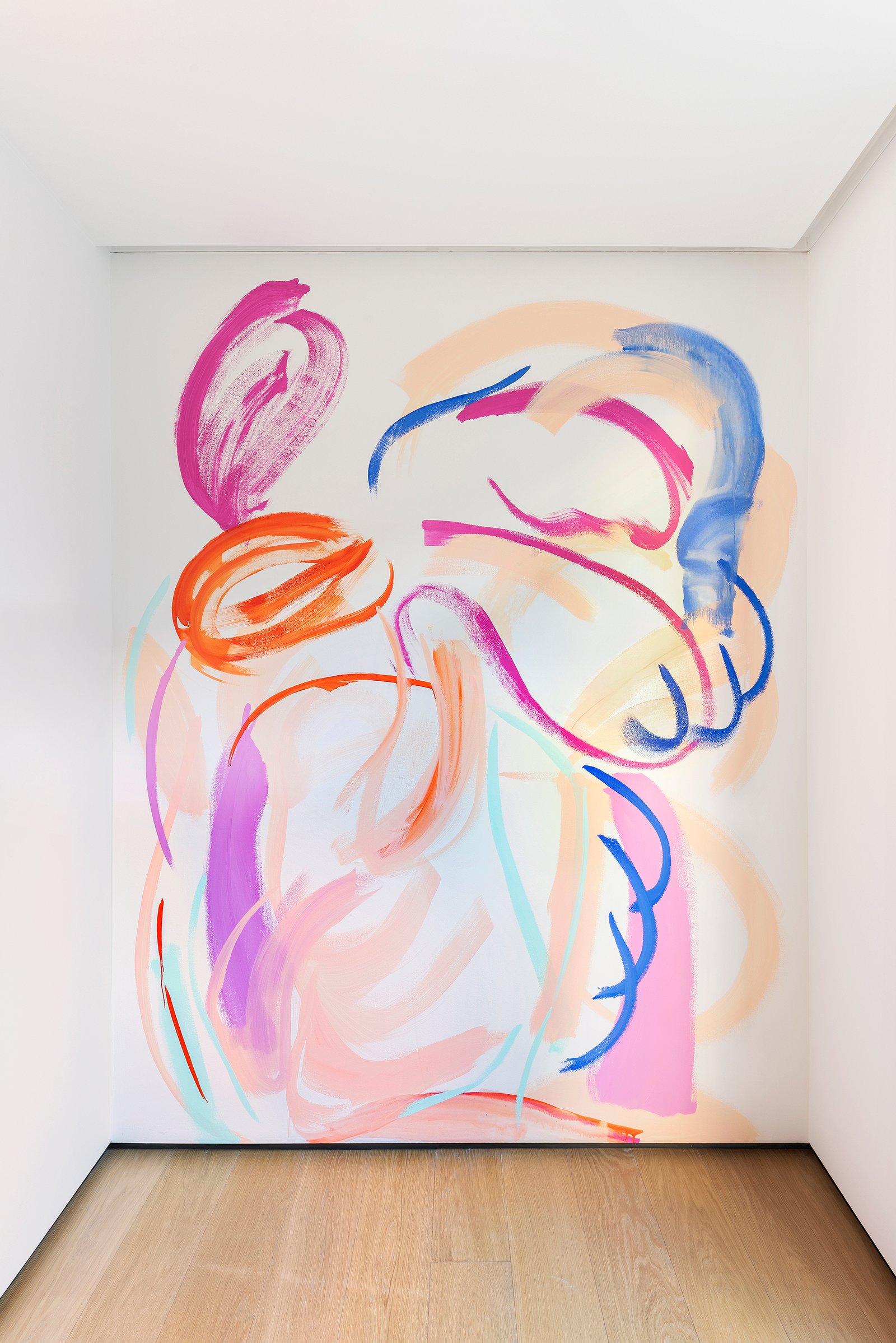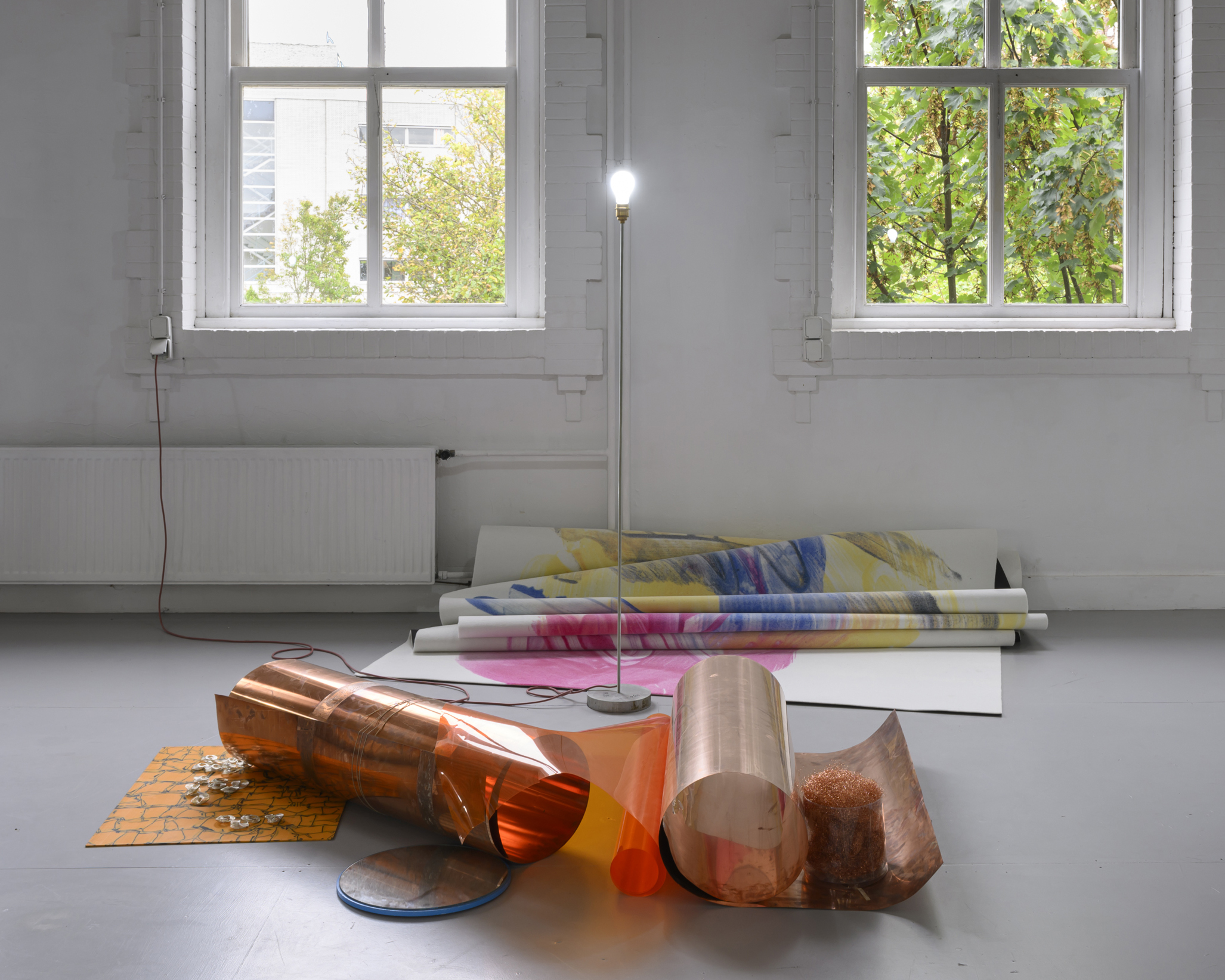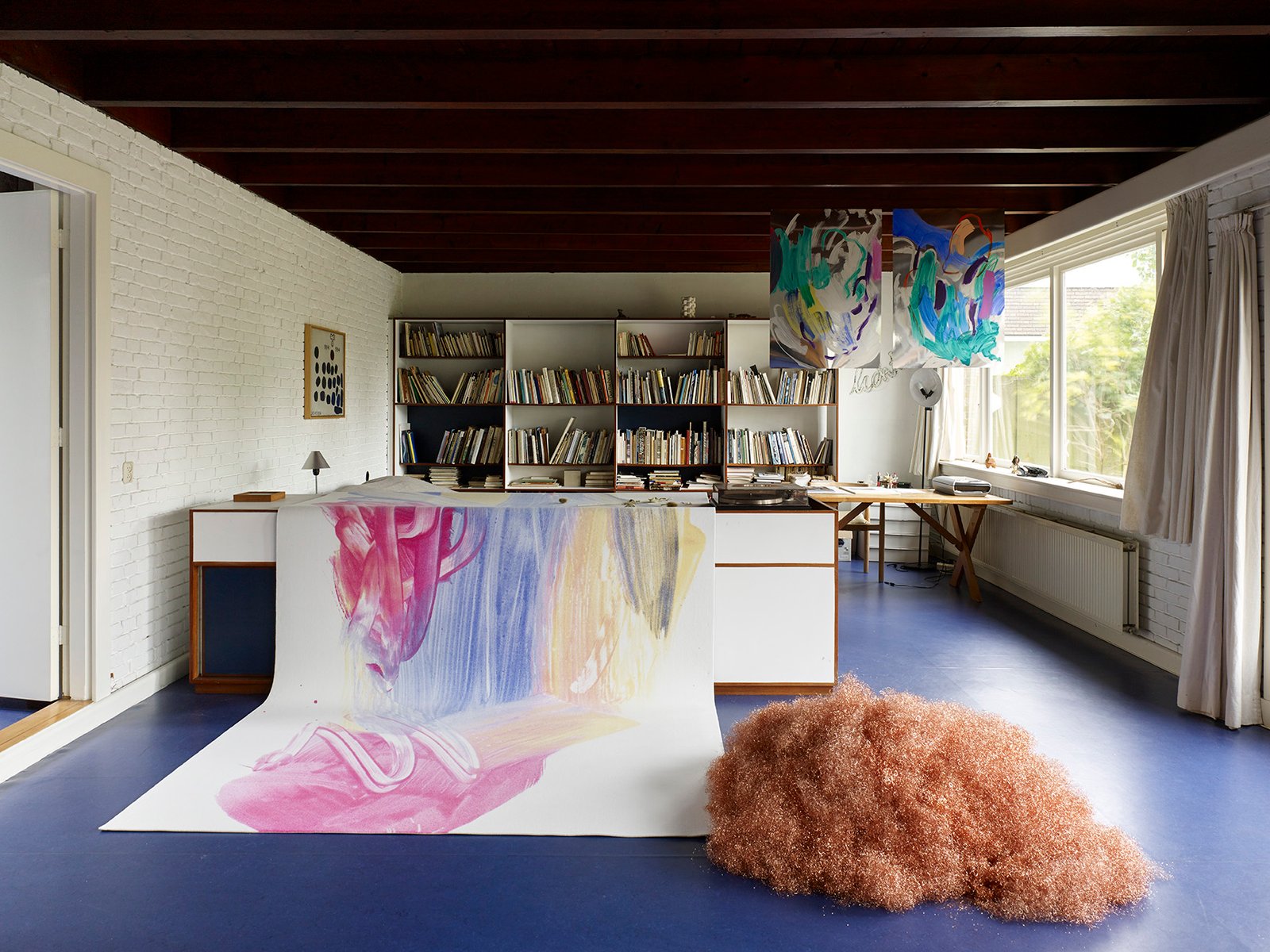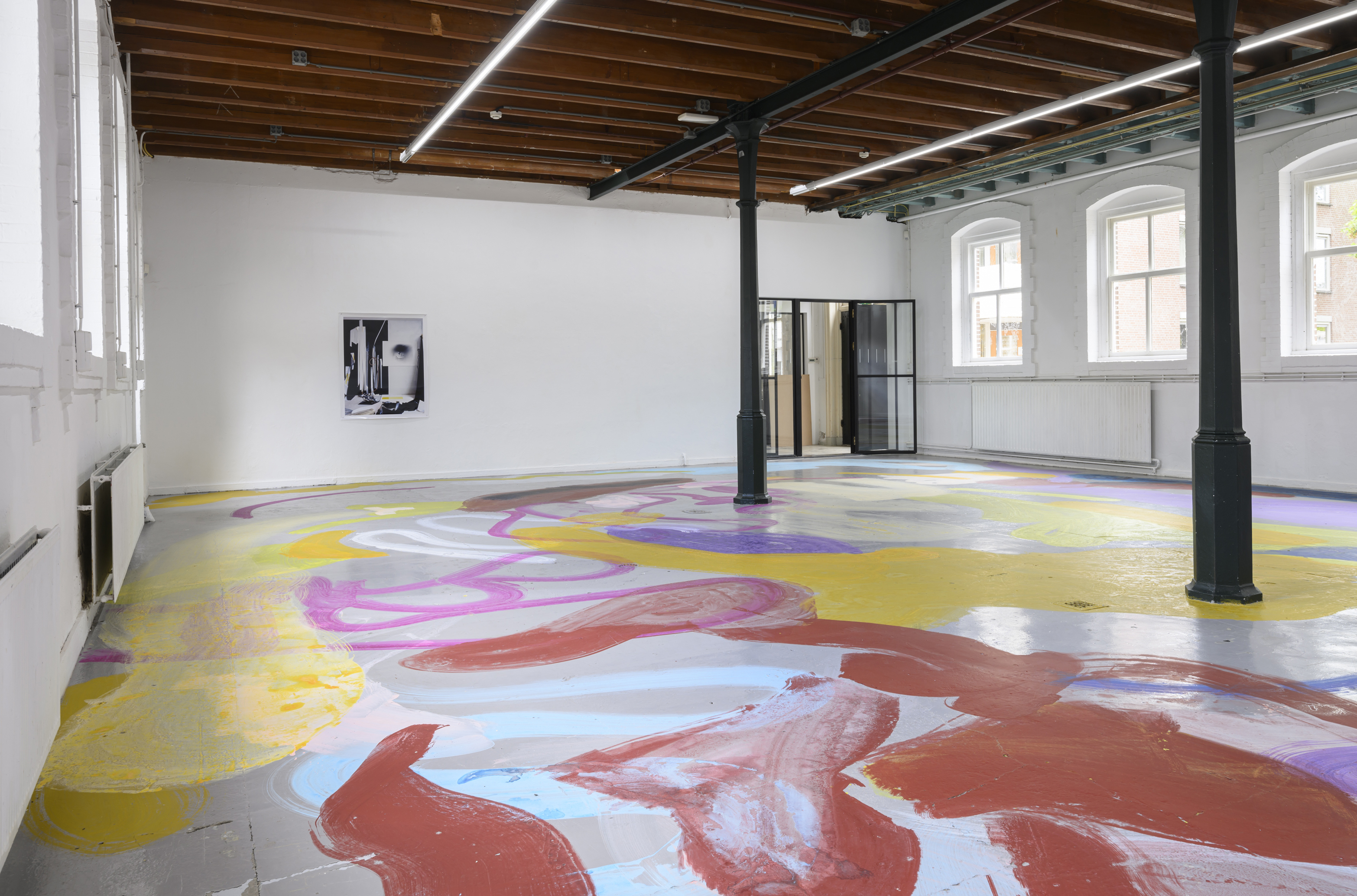Peggy Franck: breath slowly
With Peggy Franck and existence in the process of defining identity that we feed by working, or by expanding painting
The sign of Peggy Franck (Zevenaar, 1978) is curved, fluid, continuous, colorful, and probably lies in the riverbed of abstract expressionism, codified in the United States in the aftermath of World War II. It is a type of painting that goes beyond the codes of figuration to express in abstract form, moods, feelings, that is, the inner universe of the artist herself, her individuality, her existential drive. If it is then true that all art is abstract (even that which by convention is called figurative), it is also true that not all art moves from the same principles, or is able to achieve the same expressive results. Yes, because more than the sensation of pleasure one may feel when looking at a certain work, what has determined its artistic success in every era and region of the world is precisely its expressiveness, that is, the ability of the work to condense in its formal values the complexity of human beings and their existence. And this is what we also ask of Peggy Franck, who tries with her sign universe to speak to us in a context now far removed from the one in which Jackson Pollock, Robert Motherwell or Helen Frankenthaler (by the way, all authors who, like Franck, preferred to work horizontally) painted, and in the wake of what has happened in an interlude now seventy years long.

Peggy Franck’s first recollection of her artistic childhood is a children’s book about Claude Monet’s gardens. Without wishing to overestimate the value of an anecdote, however, two fundamental premises of method could already be read here. For with her own practice Franck not only intends to give physical substance to something that lies within, but also to express herself regarding her own relationship to architectural space. Just as if among the various ways in which being defines itself she was also interested in that of dwelling, interpreting her own space as Monet also did to some extent in Giverny. It is thus revealed why Franck is interested in taking her own sign system beyond verticality, beyond two-dimensionality, and even beyond the canvas, becoming a photograph (as we shall see later), a printed carpet, part of an assemblage, or going so far as to adhere directly to the architectural element ( …meanwhile, the ghosts of abstract expressionism fade over the horizon).

“When I can, I prefer to work in the place where the work will be exhibited,” says Peggy Franck, extending the sense of her practice toward the territory from installation painting to sculptural vocation. This approach has accompanied Franck since her residency at Lucebert House, in Bergen, between 2015 and 2016, under which the artist’s first publication was produced, a booklet edited in 500 copies entitled Salmon leaping time to a standstill Peggy 01 (there is already a Peggy 02, here). The paintings hang frameless from elements of the furniture, overlapping curtains, colonizing supporting structures, becoming tiles in larger compositions, or lying on tables and falling to the floor, as if they were blankets. It was said of the concept of freedom. Abandoning the tyranny of the frame is also a way of offering painting the possibility of assuming, with respect to space, a new status. In recent times, authors such as Wade Guyton (especially in collaborative works with Kelly Walker) and Katharina Grosse, Franz Ackermann, Sarah Morris or, more recently, Sonia Kacem have followed this path.

At this point, the floor painting (the first) produced by Peggy Franck for the recent exhibition at Solo Club (Breda, 2023) can seem nothing more than the natural consequence of a liberation process. Painting breaks down the ties to a specific medium, or to a certain format. After all, deconstructing also means excluding standardization, so typical of art subservient to the market. On the contrary, Franck seems more interested in grappling with the limits of painting itself and how the imprint of individuality it produces can engage in dialogue with domestic environments, before large public spaces. Again, it is a path into existence, designed to put humanity at the center instead of the structure that possesses it.

Moreover, the voluntarily undivided practice we are talking about is not even limited to the medium of painting, albeit unstructured. Often the painting becomes, through photography, an image of itself, assuming a kind of alternative existence, or rather parallel to the pictorial gesture itself. This is stubbornly analog, warm, authentic photography because it is free of retouching, an alternative (and for Franck preferable) to the kind of documentation produced by professional photography. Again, there is a preference to present the medium without a stretcher or frame, betting on the stage presence of the free sheet, unconstrained. The circle closes where it started. The artist does not allow herself to be confined. She freely expresses her being, inhabiting spaces, finding in place her own position, and with it the best version of herself. The question is no longer one of expressing, but of existing in expressing oneself, in that constant process of defining identity that every human being/artist nurtures. Here being light helps, and gouache works more than oil, just as a mop can become much more precise than a paintbrush.

November 21, 2023
